Do you want to get the most out of your photovoltaic system? Try using solar trackers.
When you use solar trackers, they orient your solar panels in the direction of maximum sunlight. With more sunlight, you get more electricity.
Let’s explore this energy development mechanism even more below.
Access the solar PV installation course to learn the details of this energy production system.
How Does a Solar Tracking System Work?
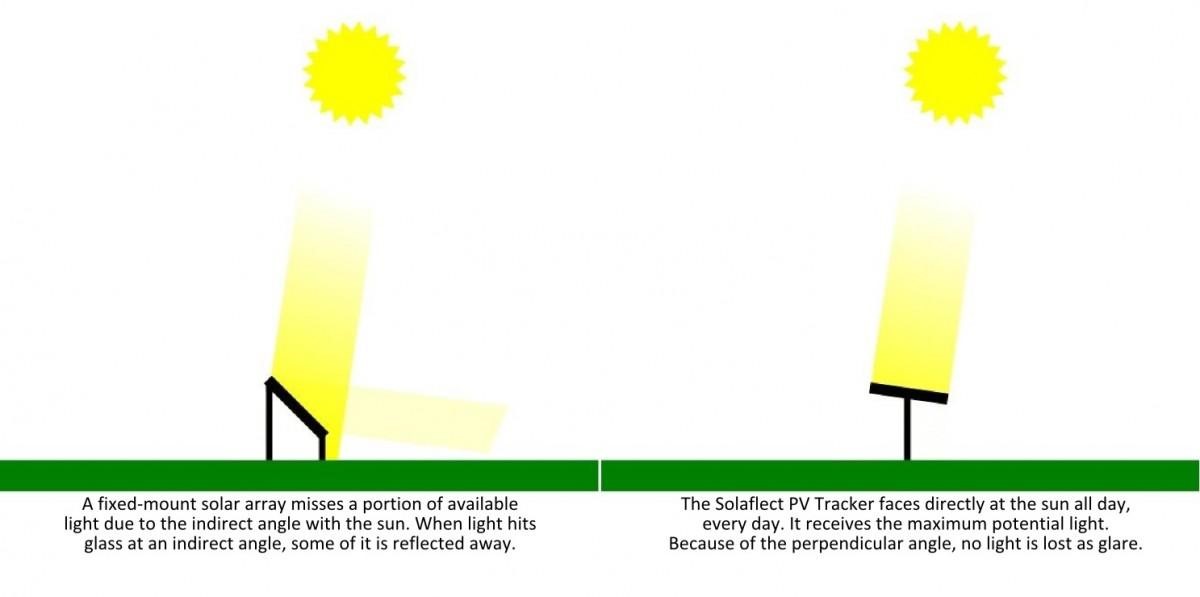
A solar tracking system or solar tracker is sometimes called a sun tracking system or a sun tracker. We must first discuss the fixed or static system to understand how it works.
With a fixed system, sunlight hits solar panels at varying angles throughout the day. This is called the angle of incidence, which determines how much incoming light is converted to electricity.
A photovoltaic panel can produce more solar electricity with a narrower angle of incidence. Because of this, a solar panel perpendicular to the sun can generate more power than when it’s not.
Solar trackers are active trackers that adjust the photovoltaic systems entirely to follow the sun as it moves across the sky. This keeps the sun’s rays perpendicular to the solar panels to receive maximum solar radiation and, therefore, more energy.
They’re commonly used for ground-mounted solar panels and large solar installations, such as solar trees.
The solar tracking system comprises components such as PLC, signal processing units, electromagnetic & mechanical motion control modules, and sensors. It’s powered by an actuator to control the entire system.
Aside from the solar tracking equipment, it also has photovoltaic equipment. This has inverters, racks & frames, and PV cells.
Strong solar radiation activates the panel, which transmits it to the sensors. The sensors relay it to the PLC, which prompts the machine’s motor to rotate. This rotation causes the panel to orient toward the sun.
Read more about how solar photovoltaics work here.
Benefits of Using Photovoltaic Panels with Solar Trackers
Are solar trackers worth it? Here are the benefits of using photovoltaic panels with solar trackers to answer this question:
Increased Efficiency
A solar tracking system can generate more renewable energy output than a fixed array because it follows the sun’s movement.
Adding a single-axis tracker produces 25 to 35 percent more solar energy than a fixed solar panel system.
A dual-axis solar tracker can increase production up to 30 to 45 percent more than a fixed system.
Reduced Costs
Solar tracking systems can cost a lot of money if we’re talking about the initial cost and maintenance costs.
If we shift our perspective to long-term costs, a solar tracking system allows you to save a lot on non-renewable energy, more so if we talk about commercial installations.
Improved System Longevity
A solar tracking system is an environmentally-friendly power source built to last. It’s designed to withstand extreme weather conditions for long-term functionality.
Types of Solar Trackers
Solar tracking systems have different mechanisms for adjusting their orientation to the sun. They can be categorised as follows:
Passive Solar Trackers

Hinting from its name, a passive solar tracker adjusts its orientation to the sun without any additional power source. It shifts its direction using mechanical movement.
Passive solar tracking systems use the sun’s heat to warm the gas inside them. The PV panels move when the gas expands from the heat.
When one side is warmed, the other tilts the panel to face the sun. The panels tilt back when the gas cools and compresses.
Active Solar Trackers
On the other hand, active solar tracking systems require an additional energy source to operate their motor or mechanical device and tilt their attached solar panels.
They use sensors to determine where the solar modules should be directed towards. They’re typically used in a large solar array.
Based on the Cartesian coordinate system, these solar tracking systems can be single-axis or dual-axis trackers.
Single-Axis Solar Trackers
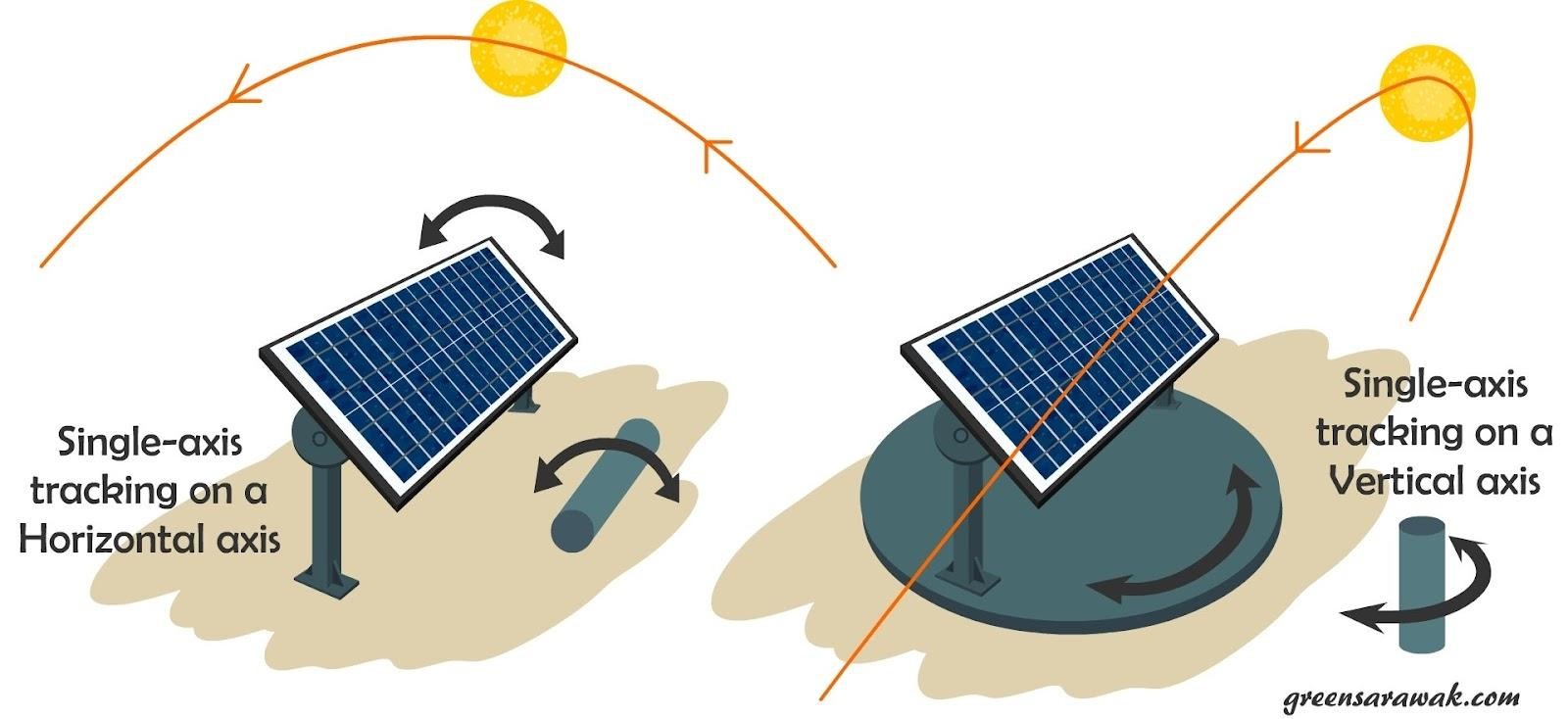
A single-axis tracker moves its solar panels around one axis only. Most single-axis solar trackers follow the sun’s path from East to West.
This movement allows a single-axis solar tracking system to improve the efficiency of a solar system without the need for more PV modules or even more solar panels.
Installing a single-axis tracking system on flat land with a dry and sunny climate is best.
A single-axis tracking system is usually cheaper than a dual-axis tracking system. Since this solar system only rotates on one axis, it’s less prone to breaking down.
Dual-Axis Solar Trackers
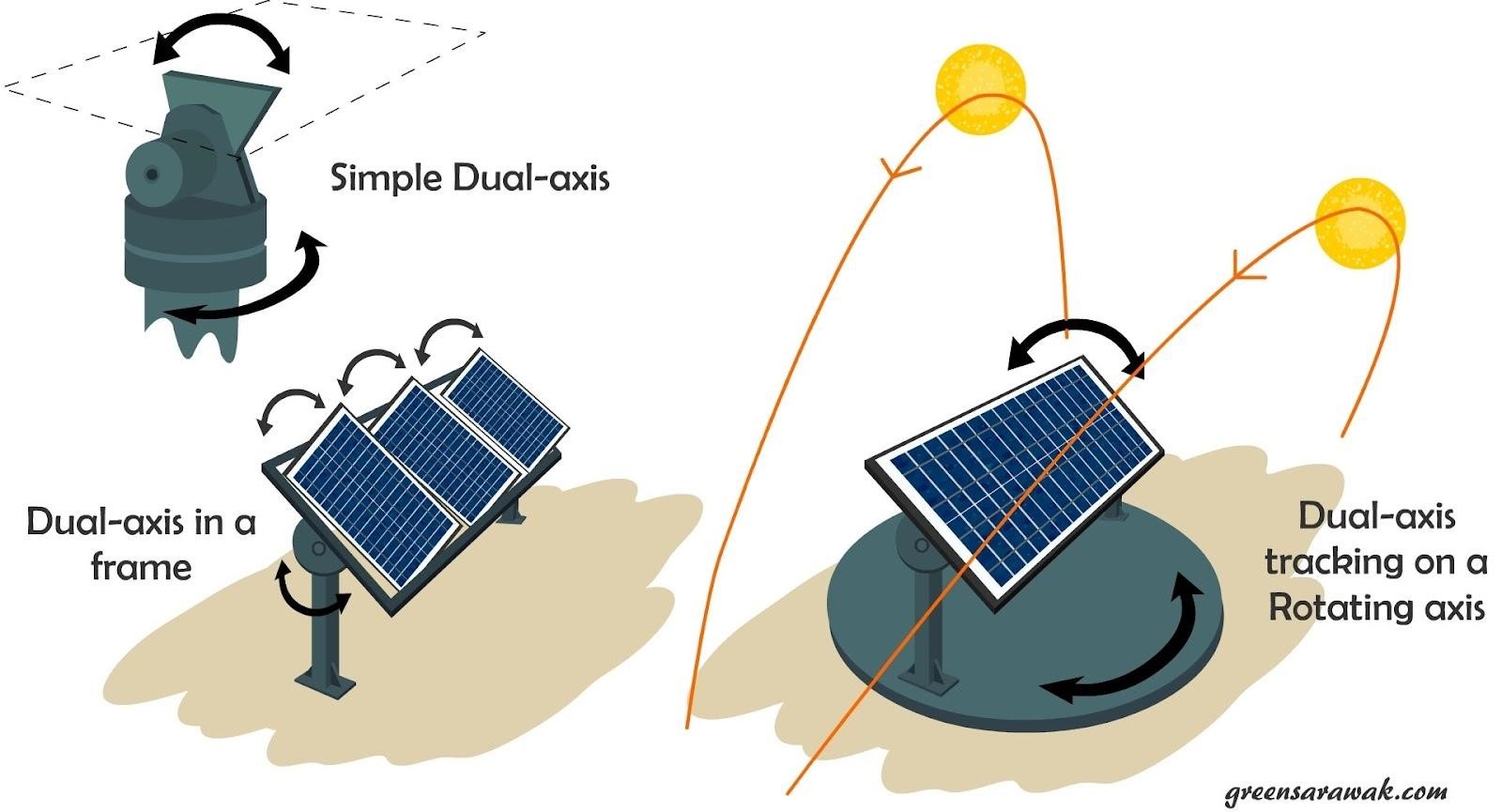
The dual-axis system moves panels around two axes at the same time. In addition to the East-to-West movement of a single-axis solar tracker, the dual-axis tracker also facilitates a North-to-South movement.
Do you know what the Azimuth angle is? If you don’t, a dual-axis tracker uses this along with other algorithm-based solutions to pair with its sensor systems to optimise solar energy collection, even with seasonal variations.
Dual-axis solar trackers produce enough power for large businesses.
But solar installations, including utility-scale projects, usually use the cheaper single-axis tracker instead of dual-axis trackers because they’re often not limited in space.
Factors to Consider When Choosing a Solar Tracker
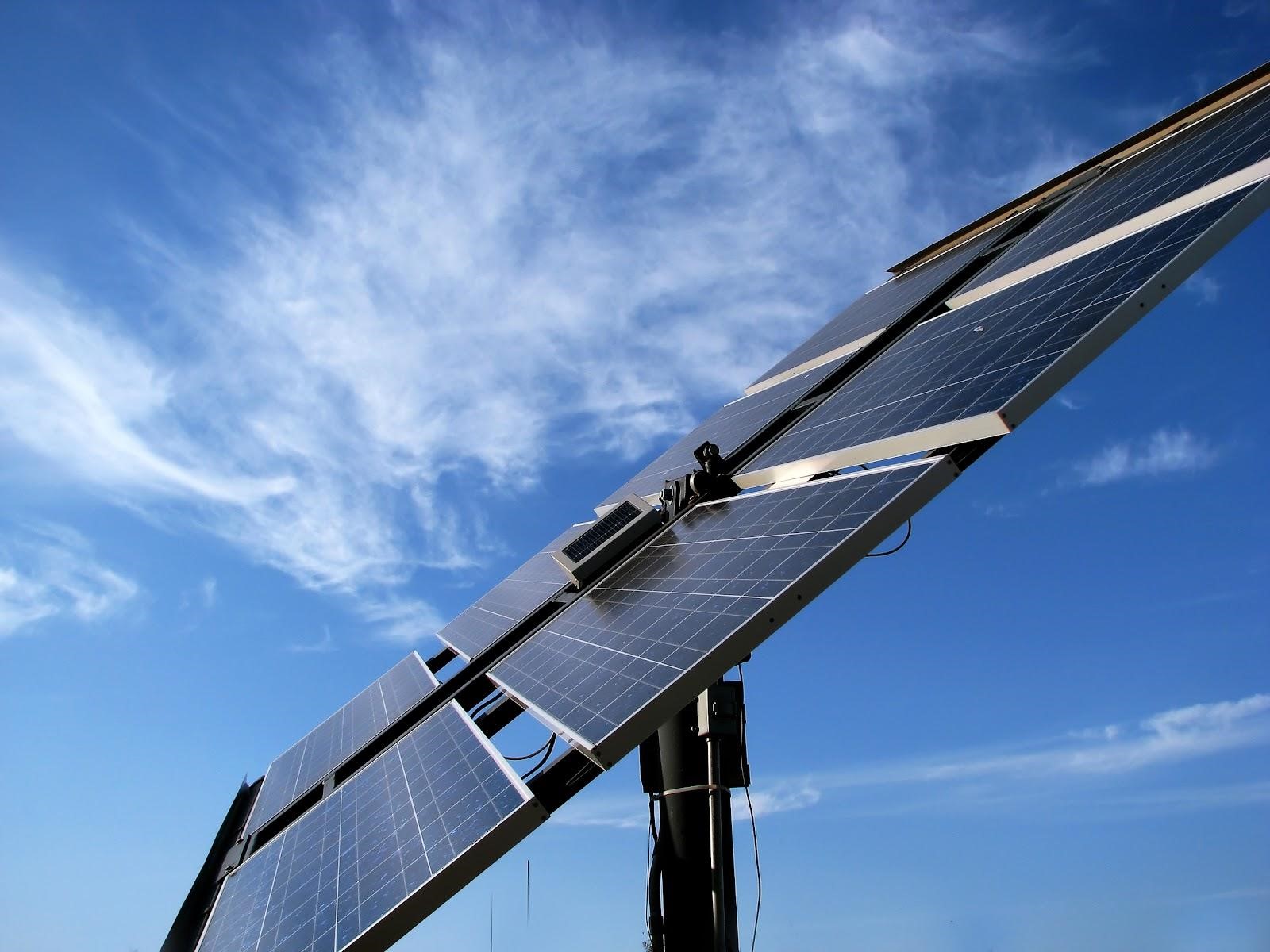
This is how much photovoltaic solar panels cost. Before you decide to add a solar tracker to your PV panels, consider the following factors to ensure that it’s worth the investment:
Climate
Your competition here is clouds, as they affect the performance of your solar tracker.
When it’s cloudy, there’s not much sunlight to hit your solar panels. When this happens, your solar tracking system can only do so much when orienting your PV panels toward the sun.
Site Conditions
Solar tracking systems are best for sites with limited space and high-energy requirements.
They’re better for a commercial solar plant than a residential site, especially because of their high installation and maintenance costs.
Solar Exposure
If you want to get the most out of your solar tracker, install it in high-latitude locations.
These locations are ideal for your solar system because they get the most solar exposure from the yearly movements of the sun.
You can also explore a passive solar building design to maximise this.
Installation and Maintenance of Solar Trackers
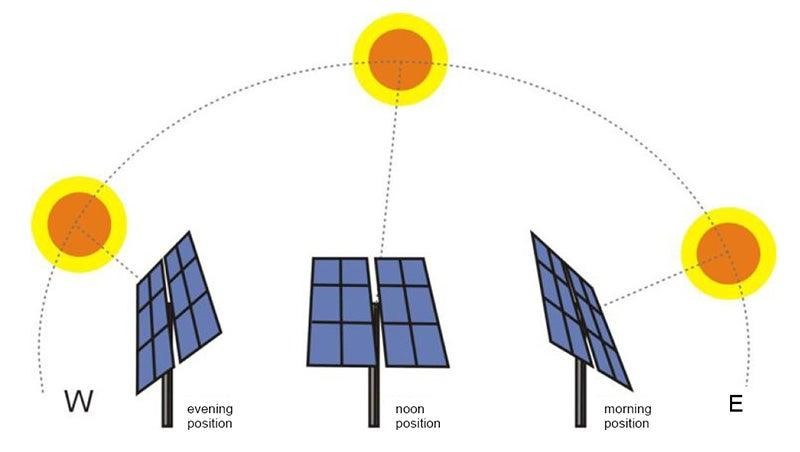
If you know how to build a photovoltaic solar panel, all you need to know now are the basics of reliability engineering for solar trackers.
Preparation of the Site
Find the right location site. Find a flat, clear piece of land that receives enough sunlight and should be your spot.
Installing the Solar Trackers
Don’t get too excited yet! The installation of solar trackers can be very specific to their manufacturers.
Read and understand the instructions properly and ensure that solar panels and electrical connections are connected securely.
Maintenance and Repair
Regularly check the solar tracker for any signs of wear and tear. Keep it clean to ensure dirt or debris won’t reduce its efficiency.
Once you spot any problem, don’t do any DIY here. Contact a qualified professional to fix the problem immediately.
Frequently Asked Questions (FAQs)
Do you want more information about solar trackers? We’ve answered commonly asked questions here for further details.
What Is the Purpose of Solar Trackers?
Solar trackers change how solar PV panels are positioned for maximum sun exposure.
They adjust solar panels to follow the position of the sun to trap more solar energy. Aside from repositioning photovoltaic panels, they’re also used to position a space telescope.
What Is the Difference Between Solar Panels and Solar Trackers?
A solar panel is a fixed or static system. It remains directed to only one orientation.
A solar tracker can optimise this solar energy system to follow the sun’s direction to get maximum power output.
Know the difference between photovoltaic panels vs solar panels here.
Do Solar Panels Have Trackers?
Not all. Trackers are additional investments to solar panel installations. They can cost more than the solar panel itself.
Sometimes it could cost less to install more solar panels than it would to add a tracker.
Conclusion
Do you want to capture your solar panels to capture more solar power? If so, go ahead and install a solar tracker.
Remember, however, that they can cost more than your solar panel. Double-check your calculations and see if they’re worth your investment in the long run.
Check out our solar PV installation course to ensure the quality and dependability of your energy system.